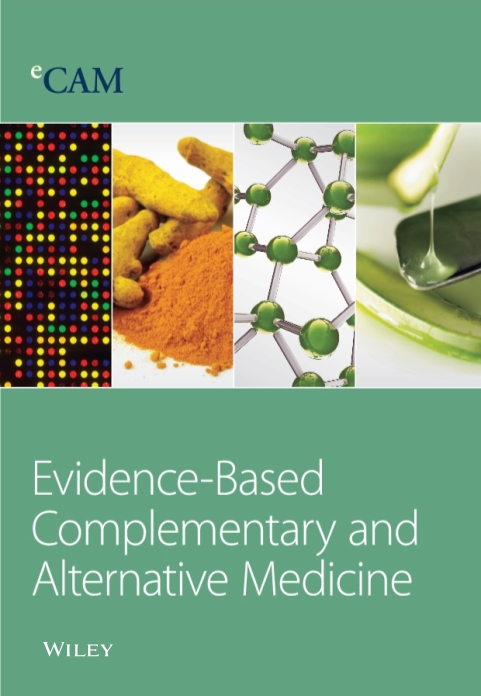生殖期的薇甘菊叶和茎对 HepG2 细胞株的体外细胞毒性
4区 医学
Q2 Medicine
Evidence-based Complementary and Alternative Medicine
Pub Date : 2023-12-26
DOI:10.1155/2023/8832166
引用次数: 0
摘要
背景。茄科植物睡茄(Withania somnifera)被用来治疗包括癌症在内的各种健康问题。调查目的本研究的目的是比较分析从睡莲的叶、茎和根中提取的甲醇提取物对 HepG2 和 L929 细胞系的体外细胞毒性特性。研究方法采用索氏提取法获得甲醇提取物。为了评估对 HepG2 和 L929 细胞株的体外抗癌作用,进行了 MTT 试验。使用倒置显微镜观察细胞形态的变化。结果显示MTT 试验结果表明,桑叶、茎和根的甲醇提取物对 HepG2 细胞的体外细胞毒性明显较高,IC50 值分别为 43.06 ± 0.615、45.60 ± 0.3 和 314.4 ± 0.795 μg/mL,而对 L929 细胞株的 IC50 值分别为 78.77 ± 0.795、90.55 ± 0.800 和 361.70 ± 0.795 μg/mL。叶的甲醇提取物对 HepG2 细胞系最有效,其次是茎的甲醇提取物。结论我们的研究结果证实,桑叶和茎的甲醇提取物对 HepG2 细胞系具有显著的体外细胞毒性,而对 L929 细胞系则没有显著的细胞毒性。此外,从 MTT 试验中获得的数据表明,就 HepG2 细胞系而言,叶甲醇提取物比茎甲醇提取物具有更强的细胞毒性活性。需要进一步研究生物活性代谢物的鉴定和分离,以探索其体外细胞毒性的机制。本文章由计算机程序翻译,如有差异,请以英文原文为准。
In Vitro Cytotoxicity of Reproductive Stage Withania somnifera Leaf and Stem on HepG2 Cell Line
Background. The ayurvedic plant Withania somnifera, a member of the Solanaceae family, has been used as a remedy for diverse health problems, including cancer. Objectives. The objective of this investigation was to conduct a comparative analysis of the in vitro cytotoxic properties of methanolic extracts derived from the leaf, stem, and root of W. somnifera on HepG2 and L929 cell lines. Methods. Methanolic extracts were obtained using the Soxhlet extraction method. To assess the in vitro anticancer action on the HepG2 and L929 cell lines, an MTT assay was performed. Changes in cell morphology were observed using an inverted microscope. Results. The MTT assay results indicated that the leaf, stem, and root methanolic extracts of W. somnifera showed significantly higher in vitro cytotoxicity in HepG2 cells, with IC50 values of 43.06 ± 0.615, 45.60 ± 0.3, and 314.4 ± 0.795 μg/mL than in L929 cell lines with 78.77 ± 0.795, 90.55 ± 0.800, and 361.70 ± 0.795 μg/mL, respectively. The leaf methanolic extract was the most effective, followed by the stem methanolic extract in the HepG2 cell line. Conclusion. The results of our study have confirmed that the methanolic extracts of both the leaf and stem of W. somnifera exhibit significant in vitro cytotoxicity in HepG2 cell lines, while displaying no significant cytotoxicity in the L929 cell line. Furthermore, the data obtained from the MTT assay indicate that the leaf methanolic extract possesses a more potent cytotoxic activity than the stem methanolic extract with respect to the HepG2 cell line. Further studies on the identification and isolation of bioactive metabolites are required to explore the mechanisms underlying their in vitro cytotoxicity.
求助全文
通过发布文献求助,成功后即可免费获取论文全文。
去求助
来源期刊
自引率
0.00%
发文量
1983
审稿时长
2.2 months
期刊介绍:
Evidence-Based Complementary and Alternative Medicine (eCAM) is an international, peer-reviewed journal that seeks to understand the sources and to encourage rigorous research in this new, yet ancient world of complementary and alternative medicine.
The journal seeks to apply scientific rigor to the study of complementary and alternative medicine (CAM) modalities, particularly traditional Asian healing systems. eCAM emphasizes health outcome, while documenting biological mechanisms of action. The journal is devoted to the advancement of science in the field of basic research, clinical studies, methodology or scientific theory in diverse areas of Biomedical Sciences. The journal does not consider articles on homeopathy.

 求助内容:
求助内容: 应助结果提醒方式:
应助结果提醒方式:


